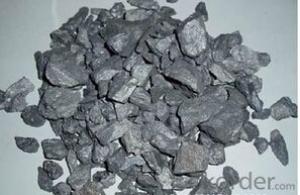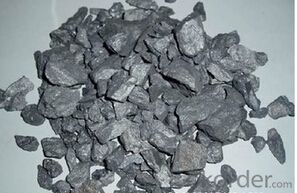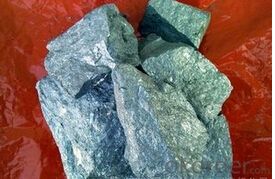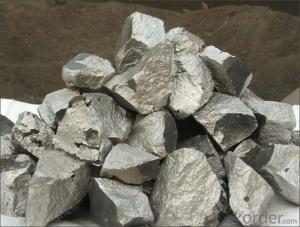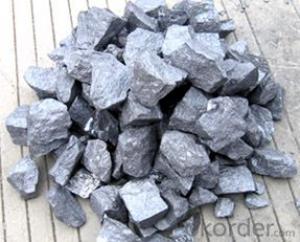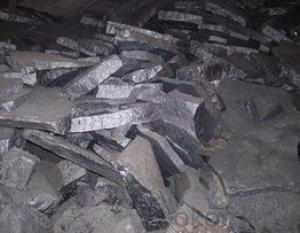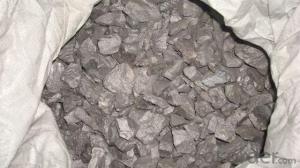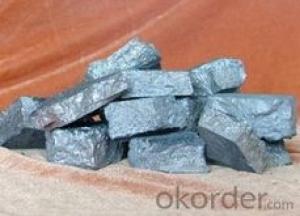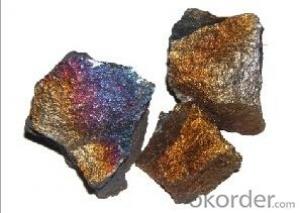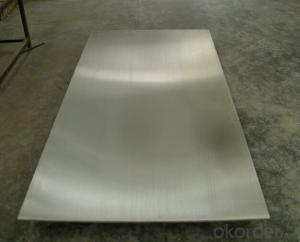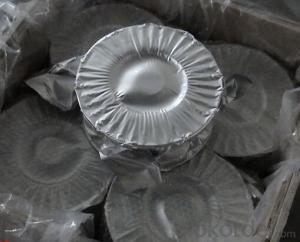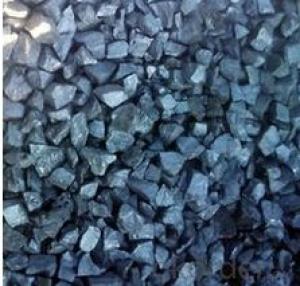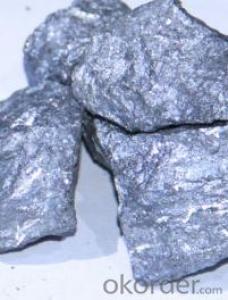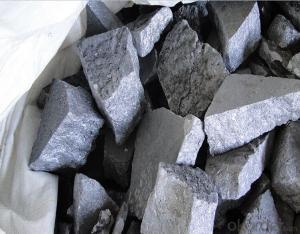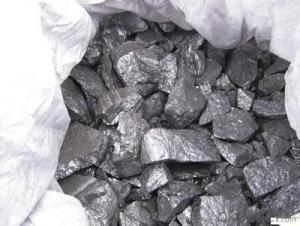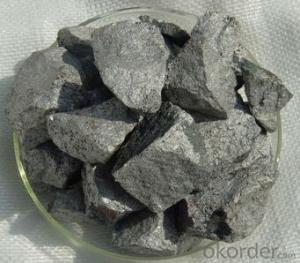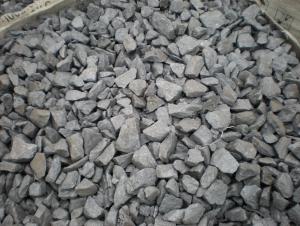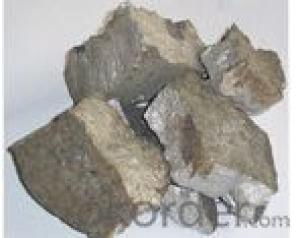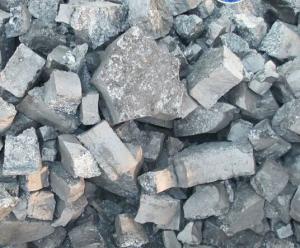Heavy Media Milled FeSi 15%
- Loading Port:
- China Main Port
- Payment Terms:
- TT OR LC
- Min Order Qty:
- -
- Supply Capability:
- -
OKorder Service Pledge
OKorder Financial Service
You Might Also Like
Specifications
Milled FeSi 15%:
1.As Heavy Media for Mining Separation
2.With Low Si :15%
3.Competitive price
Milled FeSi 15% as Heavy Media for Mining Separation :
FerroSilicon 15% is widely used as Heavy Media for the Dense Media Separation process in Mining Separation.
Ferrosilicon 15% has many properties essential to a metal or alloy powder that is to be usei as a heavy medium, some of the more important being the following:
(1) Resistance to abrasion,
(2) Resistance to corrosion,
(3) High specific gravity,
(4) Magnetism, which allows easy magnetic recovery with subsequent easy demagnetization,
(5) Low cest.
FerroSilicon 15% manufactured by Futong is exactly with above properties, and is suitable for the HMS separation in Diamond, Zinc, NIckel Mines etc.
Our FerroSilicon 15% is with good performance but much more competitive price than other suppliers.
Applications:
As Heavy Media in Dense Medium Separation process of Mining.
Chemical Analysis:
Items
| Si | Fe | Al | Ti |
Standard
| 12-18% | 70-85% | 0-3% | 0-7% |
Typical
| 15% | 77% | 1% | 4% |
Available Sizes:
48D, 65D, 100D, 150D, 270D, 270F, 48MESH, 65MESH, 100MESH, 200MESH.
Any other sizes can also be available by your request.
Package:
1 ton / big bag, 250kg / bag or drum, or other package by your request.
If you are interested in our products, please feel free to contact me.
FACTORY:
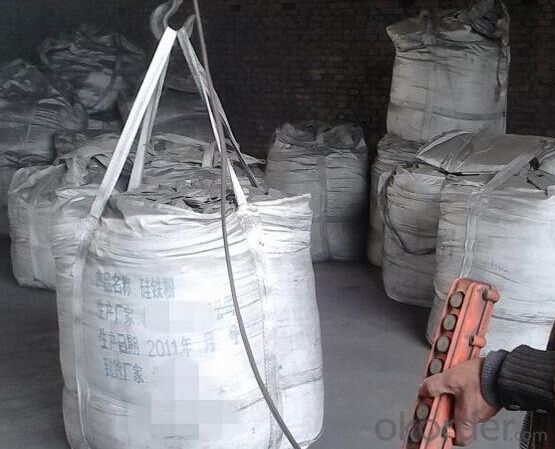

- Q: What are the differences between the two grades of carbide, YT15 and YT5?
- YT5 is often used for roughing or machining, impact cutting, and YT15 is usually semi finishing and finishing.
- Q: What are the features of cemented carbide YG8 knives?
- So professional, do not understand the normal, YG8 are used for processing pig iron and other artifacts
- Q: Method for assembling hard alloy cold heading die
- Are you the assembly of mould and punch, or the setting of hard alloy die core and steel sleeve when making cold heading die?If the mold and punch assembly, the use of gap assembly, the accuracy depends on the accuracy of your equipment,
- Q: What is the hardness of cemented carbide?
- Different grades, different hardness, usually (86 ~ 93HRA, equivalent to 69 ~ 81HRC);
- Q: What are the types and specifications of carbide cutters?
- The main components are tungsten carbide, titanium carbide (TiC) and cobaltThe grade by "YT" ("hard ti" Pinyin prefix) and the average content of titanium carbide.For example, YT15 is a tungsten titanium cobalt carbide that represents an average WTi = 15% and the remainder is tungsten carbide and cobalt content
- Q: What is the heat treatment process of cemented carbide?
- The common heat treatment process of steel bonded carbide is spheroidizing annealing, quenching and tempering.1, spheroidizing annealing die steel bonded carbide matrix is steel, as the alloy tool steel, need to be spheroidizing annealing treatment, can machine processing. The process of spheroidizing degradation is: heating 850~890 DEG C, holding 4h, and cooling the furnace to about 730 DEG C, holding 6h, the furnace is cold, and the air cooled below 500 degrees centigrade,2, the purpose is to make the quenching matrix transforms into martensite, obtain high mechanical properties, due to poor thermal conductivity, preheating, hard steel bonded carbide in carbide phase of austenite grain growth to deter, and the dissolution of carbide in the matrix alloy, iron and hinder the diffusion of carbon atoms, of austenite the grain growth plays an inhibitory effect, so the steel bonded hard alloy quenching overheating less than alloy tool steel, quenching temperature can be higher, the time may be longer, usually for WC type steel bonded hard alloy, quenching temperature of 1020~1050; for TiC type steel bonded hard alloy, quenching temperature is 950~1000 DEG C; G type steel bonded cemented carbide phase with high speed steel, quenching temperature of 1200~1280.3, steel bonded hard alloy die after quenching tempering should be timely, especially the large die should be timely, in order to eliminate quenching stress, prevent mold cracking, while tempering can adjust the organization to obtain the mechanical properties required, tempering temperature often take 180~200 C, 2h insulation, high toughness, high temperature tempering can be used as 500~650 C, but the need to avoid the brittle temperature zone at 250~350 DEG C, high temperature tempering, the carbide precipitation and residual austenite transformation, there will be two hardening, but high temperature tempering will cause precipitation of lead carbide link impact toughness decreases.
- Q: Is the hard alloy the same as the cemented carbide?
- The CBN price is a little high. If you can't accept it, you can consider using the ceramic cutter to test the PCBN (CBN) blade. Ceramic blades can not work (he is brittle, easy to crack), super hard tool sales
- Q: What is the difference between the production process of ferrous powder metallurgy and cemented carbide?
- In 1890, the invention of tungsten powder, made by powder metallurgy, in the United States, laid the foundation of modern powder metallurgy. Around 1910, it has been made by powder metallurgy method of tungsten and molybdenum products, hard alloy, bronze bearings, porous filters, brush set, and gradually formed a complete set of powder metallurgy technology. In 1930s, after the advent of the vortex grinding iron powder and the carbon reduced iron powder, the iron based mechanical parts made by powder metallurgy have gained rapid development.
- Q: What are the differences in performance between cemented carbide cutting tools and PCD cutters (polycrystalline diamond)?
- PCD has a very high hardness, but its toughness is not as good as carbide, much lower than high-speed steel, therefore, the main failure form of PCD cutting tool is cutting edge.PCD cutters can effectively process non-ferrous metal materials and non-metallic materials. Such as copper, tungsten and other non-ferrous metals and their alloys, ceramics, hard alloy, various fiber and particle reinforced composite materials, plastics, rubber, graphite, glass and wood, but the diamond is not suitable for cutting steel and other iron materials.
- Q: Processing stainless steel 301 milling thickness of about 3 millimeters, with what blade good?
- You mainly milling the surface is not refined, there is no need to use that good, in one is YS25, cheap, well, that's it, if there is any good advice to my replies
Send your message to us
Heavy Media Milled FeSi 15%
- Loading Port:
- China Main Port
- Payment Terms:
- TT OR LC
- Min Order Qty:
- -
- Supply Capability:
- -
OKorder Service Pledge
OKorder Financial Service
Similar products
Hot products
Hot Searches
Related keywords
